
This weekend, my husband and I watched The Dig, a new movie on Netflix that stars Carey Mulligan and Ralph Fiennes. We chose this movie because my husband recently learned about the true story behind this movie. He watched some documentaries and did additional research and had been sharing what he learned with me for weeks. The Dig did NOT share the story either of us was expecting.
Tell me About The Dig on Netflix
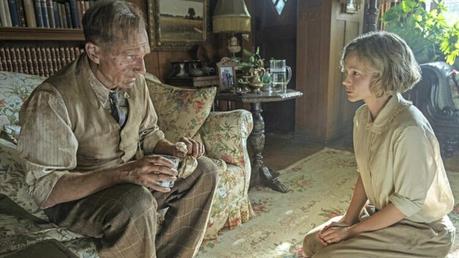
The Dig is based on a 2007 book of the same name by John Preston. Preston's book is a piece of historical fiction about the Sutton Hoo excavation. Preston was inspired by finding out after her death, that his Aunt Peggy participated in the excavation and found the first piece of treasure at the site.
While this novel is based upon a true story and includes real people, Preston took creative liberties to craft an engaging dramatic book about this event. Nothing wrong with that, some of the best novels are historical fiction. But this book has a lot of inaccuracies and due to it being written by the nephew of Peggy Piggott (one of the excavators), his book focuses a lot on this individual.
While The Dig is a good movie, it missed the opportunity to be a great movie. And that's because it's based on this book and not based on the real, and in my opinion, far more fascinating life of Edith Pretty, the owner of the property where the Sutton Hoo excavation took place.
See, Edith Pretty was a badass, and you'd never know it from this movie.
Who was Edith Pretty?
Edith May Dempster was born on August 1, 1883 to society and wealth. Her grandfather was poor but worked his way up to being a factory owner; his son was an incredibly successful industrialist. Edith's family traveled all over the globe, met royalty and leaders of countries, even participated on historic archeological digs in Egypt and Pompeii. Her father even excavated a Cistercian abbey adjoining their home at Vale Royal. This upbringing made Edith curious and passionate about history and also gave her confidence to follow her dreams.
She went to school at Roedean in Sussex, where she was given the nickname "Dempy". Edith helped crew racing yachts. She had chauffeurs but preferred to drive herself in an open-top car. She even once flew a plane.
Edith wasn't just full of adventure, she felt she had a duty to use her wealth and position to help others. When she was 30, she paid for a Mission Hall to be built in Manchester. The next year, Edith became quartermaster of a Red Cross auxiliary hospital. She insisted on traveling to France to work as a nurse with the Red Cross during the war even though everyone warned her not to.
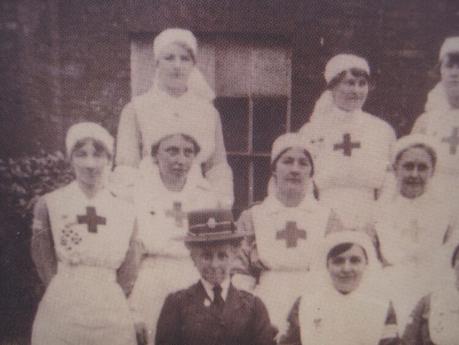
In 1922 at age 36, Edith became one of England's first women magistrates and was invited to stand for Parliament. She would have become only the third ever female MP but refused, citing responsibilities to her now-widowed father. And speaking of her family obligations...
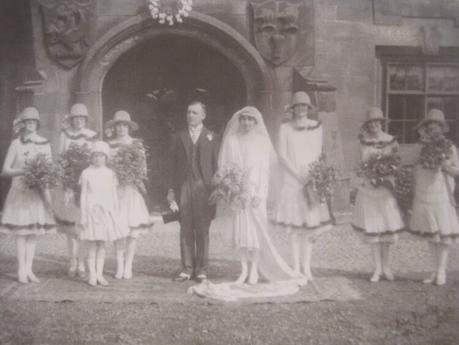
When Edith was 18, Frank Petty, a brother of one of her school friends proposed. She refused, stating she needed to care for her family. Frank continued to propose to Edith every single year on her birthday. Edith's mother passed in 1919, her father in 1925. Edith accepted Frank Petty's marriage proposal after the passing of both parents.
Some say she waited until after her father's death to marry Frank because her father didn't approve of him. Edith and Frank had a fancy society wedding with 200 guests in 1926. She was 42, her husband 47.
Edith Pretty got pregnant in 1930, she was 47 years old. At the same time she also contracted typhoid, which affected her health for the remainder of her days. Can you imagine being 47 years old and pregnant in 1930? It's hard enough to be pregnant and 47 in 2021!
And then Edith's husband got stomach cancer. The doctor told Edith not to tell her husband he was dying. She kept that secret until he died just after Christmas of his 56 th year. Their child was only 4.
Edith Pretty was into Spiritualism, which was very big during this era. She was known to regularly visit mediums and have them visit her estate. While her husband was ill, Edith had faith healer William Parish visit and felt he helped her husband's health. After her husband's death, Edith financially supported Parish and his wife to build a healing house and continue their business. She had a small altar off her husband's office where she could "communicate" with him after he died.
After her death, one of Edith's grandsons unearthed a box full of her letters. In one, Winston Churchill offered Edith a CBE to recognize her part in the Sutton Hoo find, which she refused. Many who knew Pretty felt this was typical for this badass who lived life for herself and to serve others, not to impress others.
What is Sutton Hoo?
Sutton Hoo gets its name for residing in the Suffolk village of Sutton. Hoo means hill or raised land overlooking water, and we know by now that the area is famous for the burial mounds. Sutton Hoo is about seven miles from the North Sea and an area that was well-traveled throughout history.
Edith and Frank Pretty bought the Sutton Hoo estate in 1926. One reason Edith desired this estate was because of the unusual burial mounds on the property (remember, she has always been into archeology and history).
Also, the property had a gorgeous 15-bedroom mansion on it, which was built only a couple of decades prior. This mansion was bequeathed to the National Trust in 1998 and now is called the Tranmer House in honor of the last owners of this home. Not only can you tour, but they also have it set up where you can have an overnight getaway at this estate!
Anyway, back to Edith Pretty and the Sutton Hoo excavation.
In 1937 Edith Pretty decided to have the burial mounds on her property excavated. Many say it was because she had a dream where ghosts came from the mounds, the largest one in particular. She reached out to a local museum that recommended Basil Brown.
Who was Basil Brown?
Basil Brown was born in 1888, five years after Edith Pretty. He was pretty much self-taught. He had astronomy books from his grandfather, a bit of private tutoring, and some drawing classes, but left school at age 12 to help his dad run their family farm. He continued his education through correspondence courses, always having a love of learning. In 1923 he married Dorothy May Oldfield, known as May. The two worked hard but were always struggling financially. This excavation job gave him room and board plus more money per week than he was getting at his previous job.
Edith was passionate about this excavation. She knew she was ill and wanted to have it completed before her death.
Basil Brown came to Sutton Hoo in 1937. May of 1939, Basil Brown began excavating the largest mound on the property, known as Mound 1. He looked at one the mound and considered that over the centuries the mound could have changed shape. While grave robbers usually excavate from the top down, Basil thought of excavating from the side since he didn't truly know where the center was located. And because of this genius idea, in July of that same year, he and his team found one of the most important archeological discoveries of all time, helping to define and understand the Anglo-Saxon period.
Edith died in 1942 due to a blood clot to the brain which caused a stroke. She was 59. She gifted the entire treasure from the Sutton Hoo excavation to The British Museum, her only request was to ensure Basil Brown was recognized for his part. Yet when the treasure was first shown at the Festival of Britain exhibition in 1951, Brown's name was not credited.
So What Was Found at Sutton Hoo?
Dude, you need to investigate what was excavated at Sutton Hoo. Sure, the movie shares that there was a big ship (almost 90 feet long) and how impressive it must have been to get it to where it was buried.
But inside this ship was a priceless treasure and what was clearly the final resting place for an extremely important person from the early Seventh Century. There were Byzantium silverware, garnets from Sri Lanka, and 37 coins from the Anglo-Saxon period before the introduction of an English coinage just to start. Some of the most famous pieces from the Sutton Hoo find are above. A super badass gold belt buckle (second down on left) and a phenomenal helmet (right), one of only four complete Anglo-Saxon helmets to survive, are the most showcased pieces from the treasure trove.
The sword (lower right) is pretty awesome; it was clearly for a left-handed warrior and there has been much research on it and who it possibly belonged to. Seriously, if you don't know about the Sutton Hoo find, it's worth a lunch break Google session.
So, Let's Get Back to the Movie and How it Represented Women
Okay, let's get back to this movie, The Dig. It was beautiful, it was enjoyable to watch, but it did a major disservice to the real women behind the two primary female characters.
Not only Edith Pretty, Early 20th Century Badass, was misrepresented, but so was Peggy Piggott, the woman who inspired the book that inspired this film.
The Misrepresentation of Edith Pretty
Nicole Kidman, age 53, was to play the part of Edith Pretty but had to pull out of the film due to a scheduling conflict. At the time of this excavation, Edith Pretty was 56, and had almost a decade of poor health. Kidman was replaced by Carey Mulligan, who is 35.
This portrait of Edith Pretty was painted at the same time the dig took place. This is a portrait of a badass woman with means, who didn't lie down and let life happen to her. She decided when and who to marry, she decided to help during the war even though it was dangerous. She hosted parties for her staff, gave back to her community, no one was her boss. She was a widow with a young child, she had a passion for archeology and followed it. She was strong even though her body wasn't.
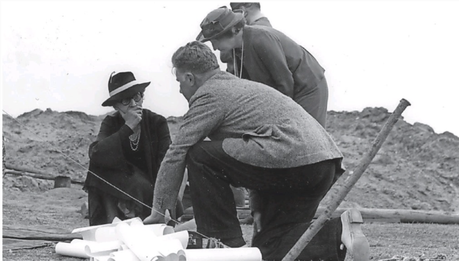
Think how vibrant this film would have been if the character of Edith Pretty was only an iota as vibrant as the real woman. Think how empowering the film would be if they thought to cast a woman that more accurately represented this woman. Imagine the different dynamic of Edith Pretty with the folks from the museums, even her relationship with Basil Brown.
Imagine Emma Thompson (age 60) in the role. Or Olivia Coleman, who is younger (47) but appearance-wise is a better fit while also being a decade older than Carey Mulligan. How about Rachel Weisz who is 50 or Naomi Watts (52)? Gillian Anderson is 52, Emily Watson is 54, Maggie Gyllenhaal is 43, a decade younger than Edith Pretty, but I think would better fit the part than Carey Mulligan.

I read in some places that Cate Blanchett was being considered for the role. At 51 and also a phenomenal actress, that would have also been a better choice.
This isn't a diss on Carey Mulligan, who is a fabulous actress and did a great job in this role. It's a diss on the film. It's dissing the fact that not only does this feel like a '90s Oscar contender with the sweeping landscapes and score and a long, slow, yet beautiful film but it's like a '90s film by assuming we need a young and pretty lead actress for a film to have any commercial success.
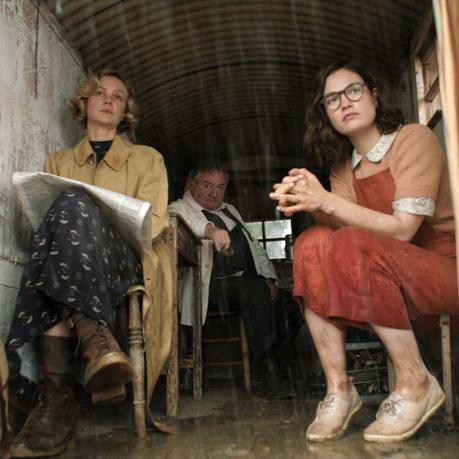
The Misrepresentation of Peggy Piggott
I could also go forever about the misrepresentation of Peggy Piggott, a well-respected archeologist portrayed in the film by Lily James. Known later in her archeological career as Margaret Guido, in The Dig, Peggy and her husband come to be part of the excavation and she is hurt to find she was brought on not because of her expertise, but because she is petite and can work on parts of the dig without damaging it. In the film, Peggy is seen often as a burden, or unnecessary, and the film shows how they found the treasure because she stepped on the cavern, breaking it open by getting her foot caught in it.

While Peggy Piggott was only 27 at the time of the Sutton Hoo excavation, she had multiple degrees from Cambridge and the Institute of Archaeology in London. She had participated and led many excavations prior to Sutton Hoo, and was an expert on The Bronze Age.
We never learn any of this. Instead, any part of the film showing Peggy Piggott showed her as young and passionate, in an unsatisfying marriage and drawn to another person (a fictional role made up for the story), her priorities seem to be about anything other than Sutton Hoo.
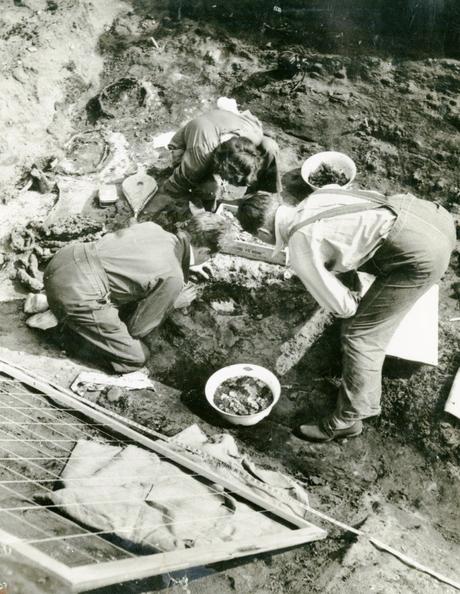
We also see her for a portion of the film in shorts and skin-baring outfits, supposedly because she and her husband came directly from their honeymoon and she had nothing else to wear until Edith Pretty offers her some of her own clothes. This is also fictional.
Not until learning that the author of the novel The Dig was related to her, I couldn't understand why her role was in the film at all, except to again appeal to '90s-era moviegoers wanting a bit of romance for their Date Night event.
It's 2021 and We Deserve Better
This wasn't a bad film. It was beautiful and not stressful, and all the actors did a fantastic job. It felt like a spa day after the drama of the world news and after seeing so many action-packed shows and movies in recent weeks.
But The Dig missed an amazing opportunity to highlight strong, intelligent, bold women. And in 2021, that is the kind of movie content we're craving and deserve.
To Learn More About The People Portrayed in the film The Dig
If you'd like to learn more about the real people portrayed in the Netflix film, The Dig, here are some cool articles I enjoyed:

